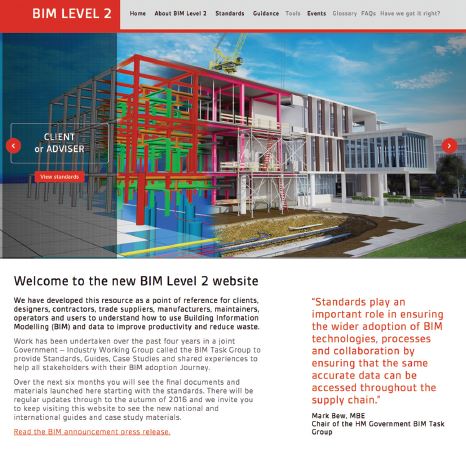The successful delivery of the Government Construction Strategy (GCS) Level 2 BIM objectives represents ‘an internationally unparalleled achievement on the journey towards the digitalisation of the built environment sector’.
Published by the Cabinet Office on 31 May 2011, the GCS – as well as the Low Carbon Construction Innovation & Growth Team: Final Report by Paul Morrell – outlined the key target of reducing the cost of Government construction projects by 15 to 20%.
Critical to reaching these targets ahead of the 4 April 2016 deadline was that all central Government departments achieved the milestone and now require tendering suppliers to demonstrate collaborative 3D Level 2 BIM maturity through defined and compliant information and data on projects.
BIM will become a required UK standard across the entire built environment and our message to all stakeholders is: join us and grasp this incredible opportunity to reduce cost and waste while driving productivity and competitiveness.
With Government departments now committed to achieving BIM maturity – the outcome of the BIM Task Group’s four-year collaboration with industry, Government client departments, private sector, institutions and academia – BIM is driving greater value at home and significant growth opportunities overseas, through improved delivery and operation of built assets.
Achievement of the mandate has allowed the BIM Task Group, together with the Government Construction Board and the Client BIM Delivery Group, to reaffirm its unwavering commitment to encouraging, supporting and enabling full BIM adoption across the industry.
This has been supported in the recent Budget which announced the development of the next generation of digital standards for the construction sector –Level 3 BIM – under the ‘Digital Built Britain’ Programme.
The £15m investment over three years is designed to maintain the UK’s global leadership in the use of this technology and will save owners of built assets billions of pounds per year in unnecessary costs as well as setting the infrastructure for the Smart Built economy.
Reflecting the industry’s ongoing transition from mobilisation for Level 2 BIM to creating ‘business as usual’, the BIM Task Group unveiled a new bim-level2.org ![]() website on 4 April.
website on 4 April.

The website at www.bim-level2.org ![]() contains a wealth of
contains a wealth of
information about BIM Level 2
Hosted and developed by the British Standards Institution (BSI), the site will continue to evolve from launch, providing a common and clear point of reference for BIM documentation, standards and guidance created in partnership with the BIM Task Group.
These documents will continue to be available free of charge in order to encourage all businesses however large or small to take part.
To look at how far we have come in four short years is to understand how far we can and need to go in the next four and beyond.
From a standing start, the UK is now leading the global race towards digitalisation of the construction industry and we will not let it slip. The hard work starts here.
BIM is now very much business as usual. Our Level 2 programme is driving efficiency and creating a competitive supply sector with our businesses in demand internationally.
BIM will become a required UK standard across the entire built environment and our message to all stakeholders is: join us and grasp this incredible opportunity to reduce cost and waste while driving productivity and competitiveness.
We have demonstrated that a partnership between Government and industry can deliver dramatic changes in the sector. This has been made possible by having a clear shared plan and commitment – the challenge now is to embed these techniques across the whole of the market to grow capacity and become business as usual.
We have, at Level 2, improved the industry. Level 3 BIM and the realisation of Digital Built Britain will create a new industry to service the challenges of the future.
For more information visit www.bim-level2.org ![]() or www.bimtaskgroup.org
or www.bimtaskgroup.org ![]()


